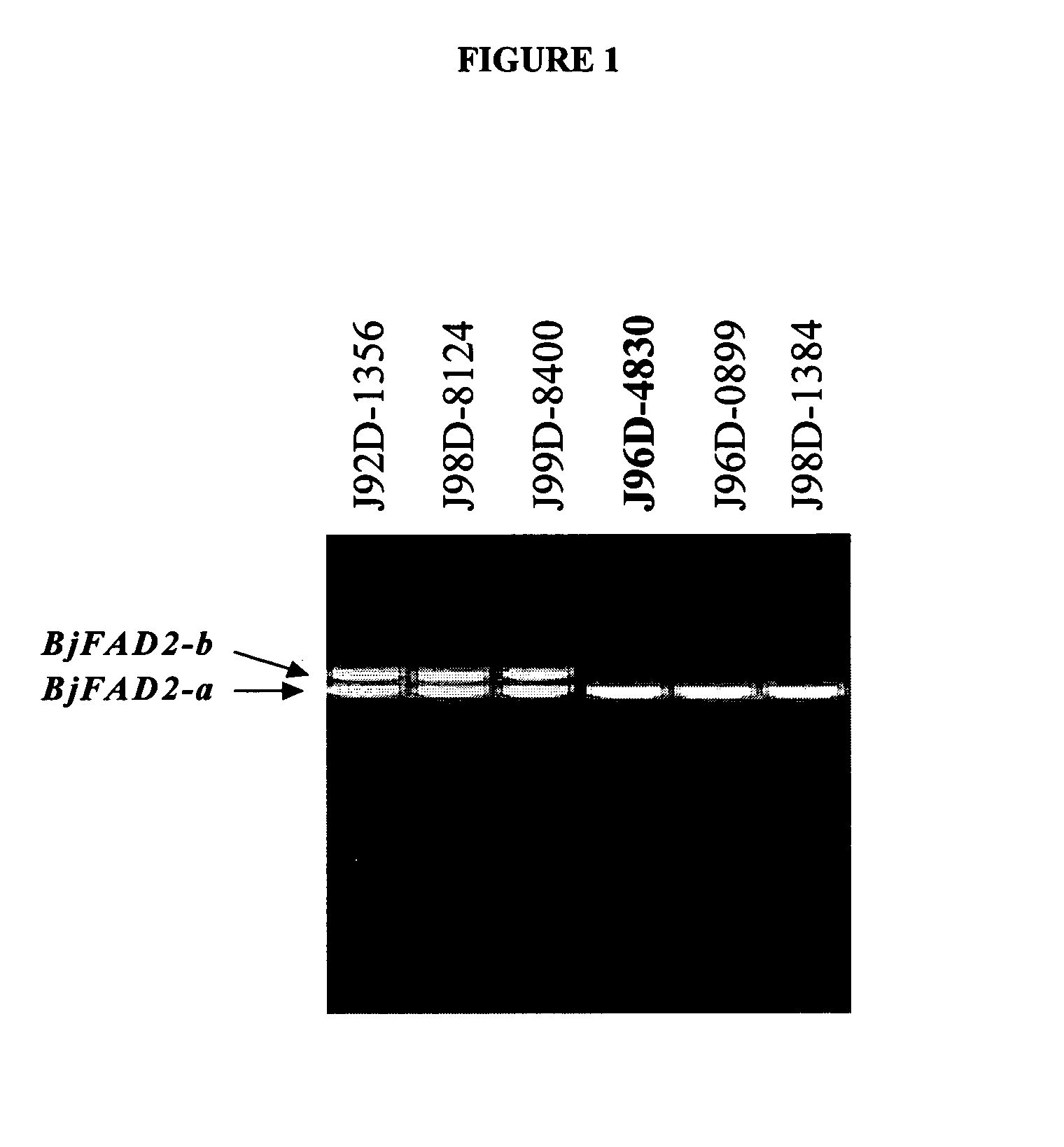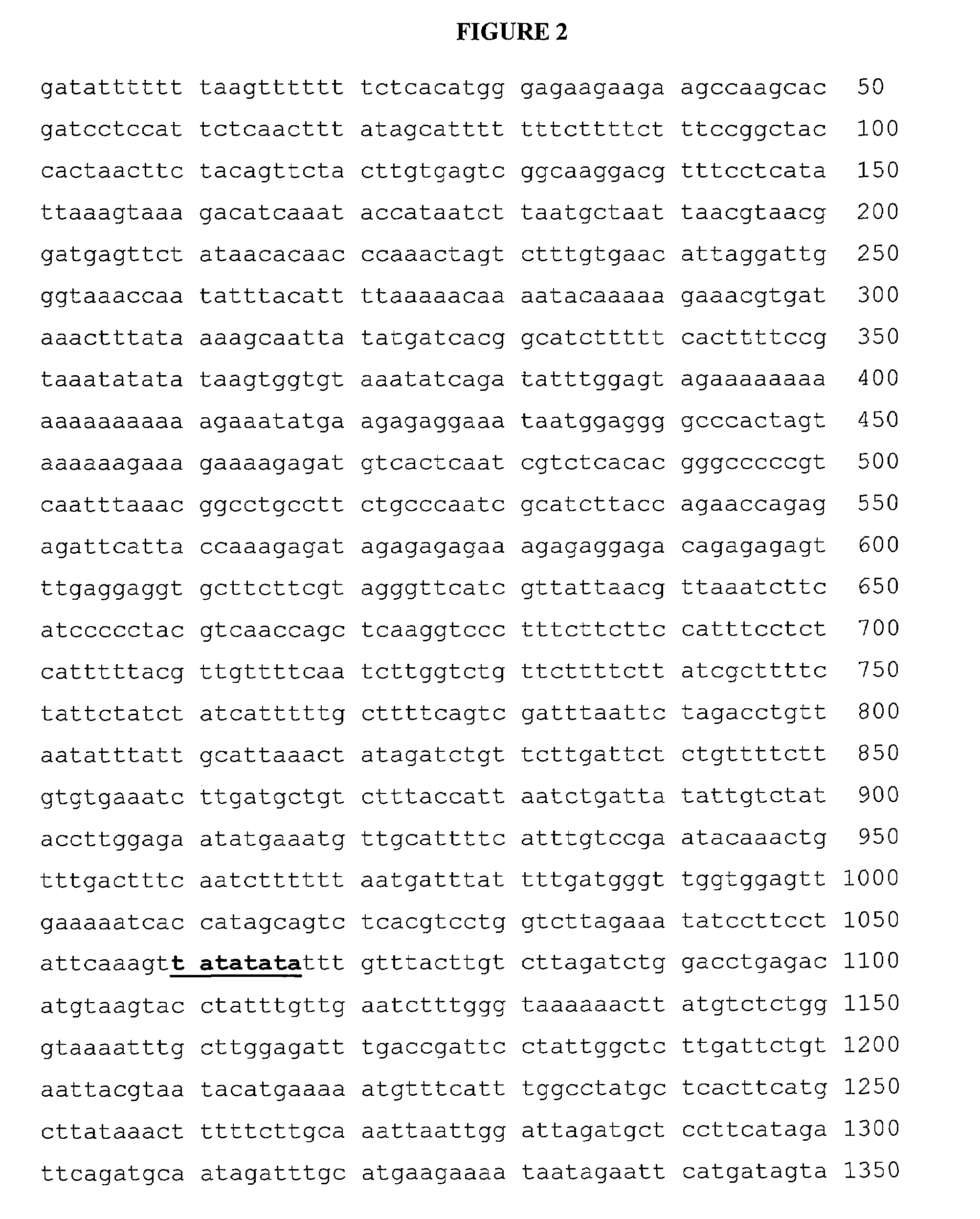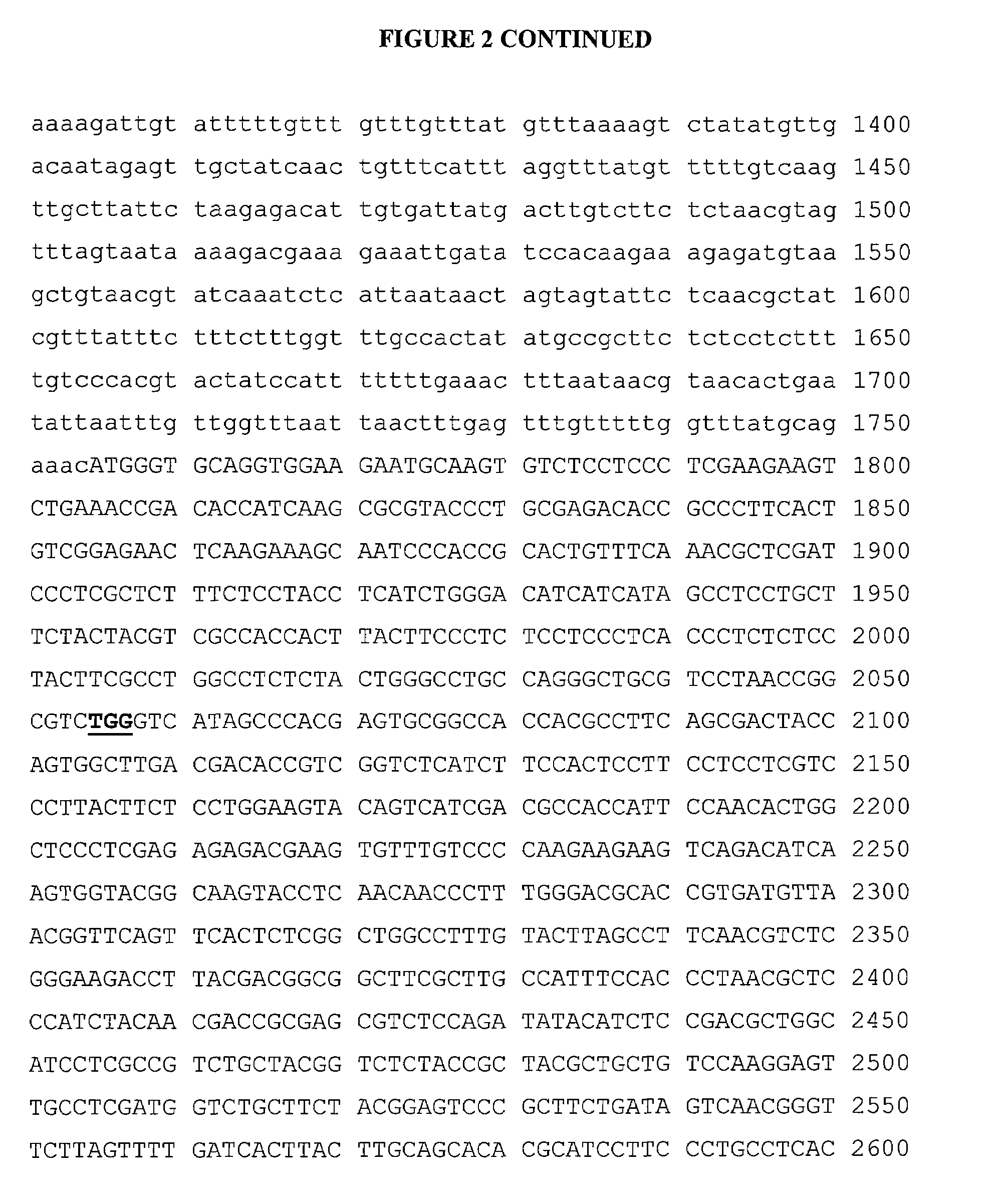High oleic acid Brassica juncea
a technology brassica, which is applied in the field of high oleic acid i > brassica juncea /i >, brassica lines, etc., can solve the problems of not all fatty acids in vegetable oil are equally vulnerable to high temperature and oxidation, and affect the quality and stability of oil, and achieves the effect of higher oleic acid conten
- Summary
- Abstract
- Description
- Claims
- Application Information
AI Technical Summary
Benefits of technology
Problems solved by technology
Method used
Image
Examples
example 1
Creation of a Collection of Mutagenized B. juncea Seed Lines
[0076]Seeds of Brassica juncea line J96D-4830 were selected as the starting material. This line possess an endogenous edible oil with a fatty acid profile identical to that of canola oil, therefore it belongs to the family of canola quality Brassica juncea (CQBJ).
[0077]The J96D-4830 seeds from several self-pollinated individual plants were pooled and 3000 seeds were subjected to mutagenesis using ethylmethanesulfonate (EMS), a chemical mutagen. More specifically, the seeds were placed in a large petri dish containing 50 ml of 0.3% ethylmethanesulfonate (EMS) water solution. The petri dish was then covered by aluminum foil and incubated at 20° C. for 19 hrs with occasional gentle shaking. At the end of the incubation period, the EMS solution was collected into a bottle and neutralized with Na2CO3. The EMS treated seeds were washed 5 times with water before being planted into soil (Ready-Earth) in 6 flats, with each flat bein...
example 2
Screening for the Increased Oleic Acid Mutant phenotype
[0080]After the M2 seeds germinated, leaf tissue of the young seedlings was used for total fatty acid extraction. Analysis by gas liquid chromatography of fatty acid profiles of leaf tissues was used as a primary screening for mutant lines with increased oleic acid content. Although leaf tissue has a very different fatty acid composition than seed, we assume that there is a positive correlation between the two tissues in their fatty acid composition. In the present example, it is demonstrated that in Brassica juncea, the oleic acid content in leaves and the oleic acid in seeds may be positively correlated.
[0081]Eight seeds from each individual M2 seed line were planted in 2.5″×2.5″ soil-containing pots to produce M2 plants. These M2 plants were kept in an environmentally controlled greenhouse having 25° C. / 15° C., 14 hr / 10 hr cycles of day / night conditions. After about 4 weeks when the M2 plants reached 4-5 leaf stages, ˜0.1 g o...
example 3
High Oleic Acid Brassica juncea Line
[0085]The individual plant MJ02-086-3 (M2) was transferred to a 6″ planting pot and bagged before flowering to allow self-pollination and kept in the same growth conditions as described above. There was no abnormal growth and development behavior observed during the entire growth period in respect to leaf size and shape, flowering time, plant height and seed set. After harvesting the seeds (M3), the fatty acid compositions of the seeds were analyzed by gas liquid chromatography in a similar way as for leaf tissue but with modifications in sample preparation. Specifically, for fatty acid extraction, one small scoop of seeds (approximately 300 mg or approximately 80 seeds) was placed into a plastic vial that contains a stainless metal rod (Profast'ners, Saskatoon, Saskatchewan). To each vial, 2 ml of 0.5 M sodium methoxide in methanol (Fisher, Nepean, Ontario) and 1 ml of hexane. The vial was capped well and shaken for 10 min at high speed using an ...
PUM
| Property | Measurement | Unit |
|---|---|---|
| temperature | aaaaa | aaaaa |
| temperature | aaaaa | aaaaa |
| temperature | aaaaa | aaaaa |
Abstract
Description
Claims
Application Information
 Login to View More
Login to View More - R&D
- Intellectual Property
- Life Sciences
- Materials
- Tech Scout
- Unparalleled Data Quality
- Higher Quality Content
- 60% Fewer Hallucinations
Browse by: Latest US Patents, China's latest patents, Technical Efficacy Thesaurus, Application Domain, Technology Topic, Popular Technical Reports.
© 2025 PatSnap. All rights reserved.Legal|Privacy policy|Modern Slavery Act Transparency Statement|Sitemap|About US| Contact US: help@patsnap.com



